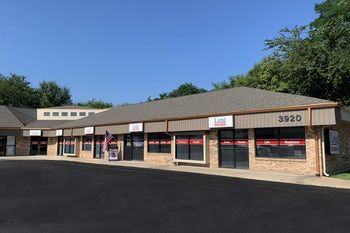Even if you don’t live in a flood plain, the potential for flooding could be a concern anywhere in the country.
Flooding is the most common natural disaster in the U.S. and occurs in every state and territory. In fact, in the U.S., floods kill more people each year than tornadoes, hurricanes or lightning. At particular risk of flooding are areas near rivers, at low water crossings, in recent burn areas in mountainous terrain and in urban areas where pavement and roofs concentrate rainfall runoff. In the spring, heavy rains falling on melting snowpack can cause streams and rivers to overflow and produce flash flooding.
PREPARATION IS A MUST
Take steps to protect your home and your family.
- Build an emergency kit with supplies you may need in case a flood leaves you without power, water or gas. Check out https://www.ready.gov/kit for help on how to build your kit
- Learn what to do before, during and after a flood by visiting https://www.ready.gov/floods
- Listen to local officials and obey any evacuation orders for your area during an emergency
- Be aware of conditions in your area:
- See current active weather alerts for your location or other locations by visiting https://www.weather.gov/alerts
- Make sure your mobile device is configured to receive Wireless Emergency Alerts (WEA) and get more information on alerts at https://www.weather.gov/wrn/we...
UNDERSTAND WATCH, WARNING
Listen for weather notifications in your area and know the difference between watches and warnings:
- Flood Watch: Flash flooding is possible within the designated water area – be alert
- Flood Warning: Flash flooding or flooding has been reported or is imminent – take necessary precautions at once! Get to higher ground
- Urban and Small Stream Advisory: Flooding of small streams, streets or low-lying areas such as railroad underpasses and urban storm drains is occurring
- Flash Flood or Flood Statement: Follow-up information gives details regarding a flash flood/flood event
TAKE APPROPRIATE PRECAUTIONS
- Never attempt to drive on or through a flooded road
- Talk to your insurance agent about obtaining flood insurance on your home, and remember that the policy may take 30 days to take effect; remember that standard home policies exclude coverage for surface water that damages the property. You may need to obtain coverage through the National Flood Insurance Program
- Consider installing foundation flood vents on your home to allow flood waters to safely pass below your home when flooding is occurring
- Consider purchasing a flood protection door barrier or a perimeter flood barrier
This loss control information is advisory only. The author assumes no responsibility for management or control of loss control activities. Not all exposures are identified in this article. Coverages described here are in the most general terms and are subject to actual policy conditions and exclusions.










